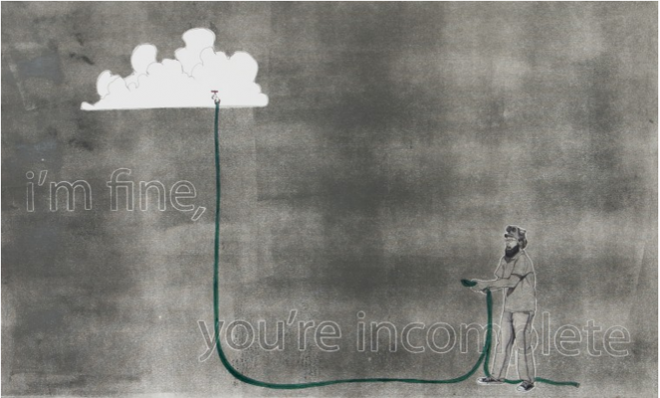Where to Look: On Arts Writing in Shreveport

Joshua Chambers is one of three artists highlighted in the final exhibition in the "Critics' Series" curated by Robert Pincus at artspace in Shreveport.
Last month, the Shreveport Regional Arts Council (SRAC) hosted a symposium titled “Conversations on Criticism: The Future of Intelligent Writing on the Arts.” This is not the first time that SRAC has invited outside arts writers to meet, write, and reflect on the city’s surprisingly active and ardent arts community. Two years ago, they invited Robert Pincus, 25-year veteran critic at the San Diego Union-Tribune and regular contributor to Artforum, ARTnews, and Art in America, to develop a two-year “Critics’ Series,” an effort supported by the National Endowment for the Arts to raise the critical dialogue surrounding Shreveport’s artists.
For the culminating event, I was asked (albeit as a last minute replacement) to sit on the panel “Covering the Arts: Regional and National Issues.” Critics included Pincus; David L. Ulin, book critic for the Los Angeles Times; Anne Marie Walsh, theater and dance critic for the San Diego Union-Tribune; Michael Killoren, NEA Director of Local Arts Agencies and Challenge America Fast Track; Alan English, Executive Editor of the Shreveport Times; and Michael Granberry, columnist for the Dallas Morning News. Pincus kicked things off with the increasingly frequent discussion of national versus regional. Shreveport’s Alan English pointed to the terms’ use in conjunction with artists as a mode of validation, a way of placing artists within certain classifications. David Ulin, perhaps betraying his roots in Los Angeles—a major metropolis that nevertheless maintains a strong history of localized aesthetics—suggested that artists grounded in regional culture need not be limited, touching on universal themes and ideas.
It was an apt introduction to the most engaging part of the symposium. Rather than stay in the realm of generalities or theory, SRAC had a clear plan to get the writers interacting with Shreveport artists. There was a schedule of studio visits, portfolio reviews, poetry readings, performances, and site visits. I was tremendously impressed by the quality and quantity of artists working in the city. The people that I met—Robert Leitz, Katie Bickham, and Rachul McClintic, to name a few—are the sorts of artists and thinkers that make me want to return to Shreveport. In arts writing, much of our work is defined by what we decide to write about, what we spotlight and what we omit. These decisions reveal much about what we value in our communities. My time in Shreveport has made me mindful of an area that has been overlooked and undervalued but deserves my future attention.



